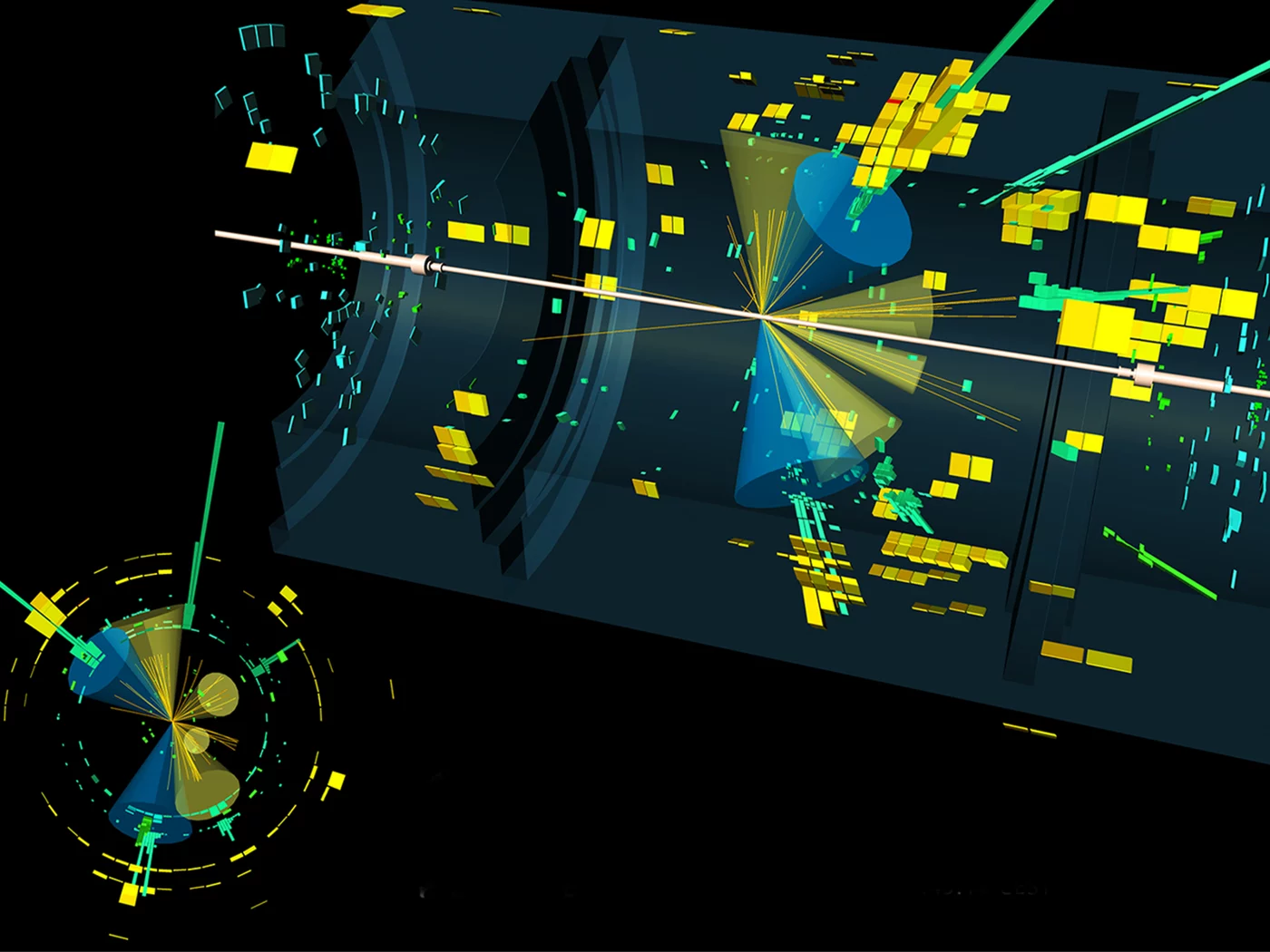Jul 6 2022Reviewed by Alex Smith
Atlas and CMS Experiments that took place ten years ago reported phenomenal success. The last missing piece in the Standard Model of particle physics has been discovered less than three years after the start of the Large Hadron Collider (LHC) at Cern.
 A collision event in the Atlas detector: Higgs boson coupling to top quark. Image Credits: ATLAS/CERN
A collision event in the Atlas detector: Higgs boson coupling to top quark. Image Credits: ATLAS/CERN
The Higgs boson is a type of messenger of the Higgs field, which supplies mass to all matter particles. In celebration of Higgs’ birthday, scientists — including two Max Planck Institute for Physics experts — summarize what they have learned so far about the Higgs boson and look ahead to see what new insights could be acquired.
The Higgs boson was the focus of attention on July 4th, 2012. The particle physics community celebrated its triumph, and almost every newspaper and news program covered the remarkable finding.
Predicted as early as the 1960s by theorists Peter Higgs, Robert Brout, and François Englert, it took over 50 years for the necessary “search engine” to be ready: the particle accelerator LHC with the Atlas and CMS experiments. There are proton-proton collisions, and scientists have successfully investigated the wreckage for signs of the expected Higgs particle.
Particle physics completed the Standard Model with the Higgs boson: twelve elementary matter particles, four exchange particles, and, as the keystone, the Higgs boson—the sole particle without spin. This particle represents the Higgs quantum field, which fills the cosmos like syrup and “sticks” to other particles as mass.
The tenth anniversary of the revelation calls for a scientific appraisal of the previous decade as well as a look ahead. Two Max Planck Institute for Physics researchers contributed to the eotk in the current edition of Nature.
Sandra Kortner is a co-author of an Atlas experiment publication reporting on the most recent Higgs boson property measurements. Giulia Zanderighi, a theoretical physicist, examines basic Higgs boson concerns.
What Has Happened So Far...
The discovery of the Higgs boson was only the beginning of more extensive research. Atlas scientists have examined the particle’s characteristics with exceptional accuracy during the last decade. The two lengthy LHC experiments have focused on the reactions of the Higgs with other particles in the Standard Model.
The exciting thing is that there is so much to be seen. We have observed how the Higgs boson interacts with the five heaviest known elementary particles, and have good hints for another two. The results actually fit very well with theoretical predictions which became much more accurate over time.
Sandra Kortner, Research Group Lead, LHC Physics, Max Planck Institute for Physics
Kortner added, “The results actually fit very well with theoretical predictions which became much more accurate over time.”
The Atlas detector has detected around 30,000 Higgs bosons since the discovery of the Higgs boson. The LHC’s run 3 began a few weeks ago and will last until 2025.
“After that, we will be able to characterize Higgs boson and its interactions with elementary particles even more precisely and, while doing so, potentially come across new discoveries,” stated Kortner.
...And May Happen in the Future
The second review paper adds theoretical insight on the Higgs boson and the discoveries to date. Furthermore, the authors explain several possibilities that could be found in future trials. Interactions with lighter particles in the Standard Model, such as muons and charm quarks, are one example.
Further measurements could also show that the Higgs boson is not elementary, but has a substructure.
Giulia Zanderighi, Director, Division of Novel Computational Methods in Particle Physics, Max Planck Institute for Physics.
Furthermore, the Higgs boson has fascinating connections to other significant subjects in particle physics.
Zanderighi further stated, “For example, the Higgs could be involved in inflation, which is the abrupt expansion of the early universe. In addition, the Higgs could be a kind of portal to dark matter. And the question of why there is matter in the universe, but hardly any antimatter, might also be related to the birthday child.”
A better understanding of the Higgs boson’s characteristics might aid in understanding its function in these problems. Thus, physicists have a good cause to continue investigating the nature of the elementary birthday child.
Journal Reference:
Salam, G. P., et al. (2022) The Higgs boson turns ten. Nature. doi:10.1038/s41586-022-04899-4.
Source: https://www.mpg.de/en